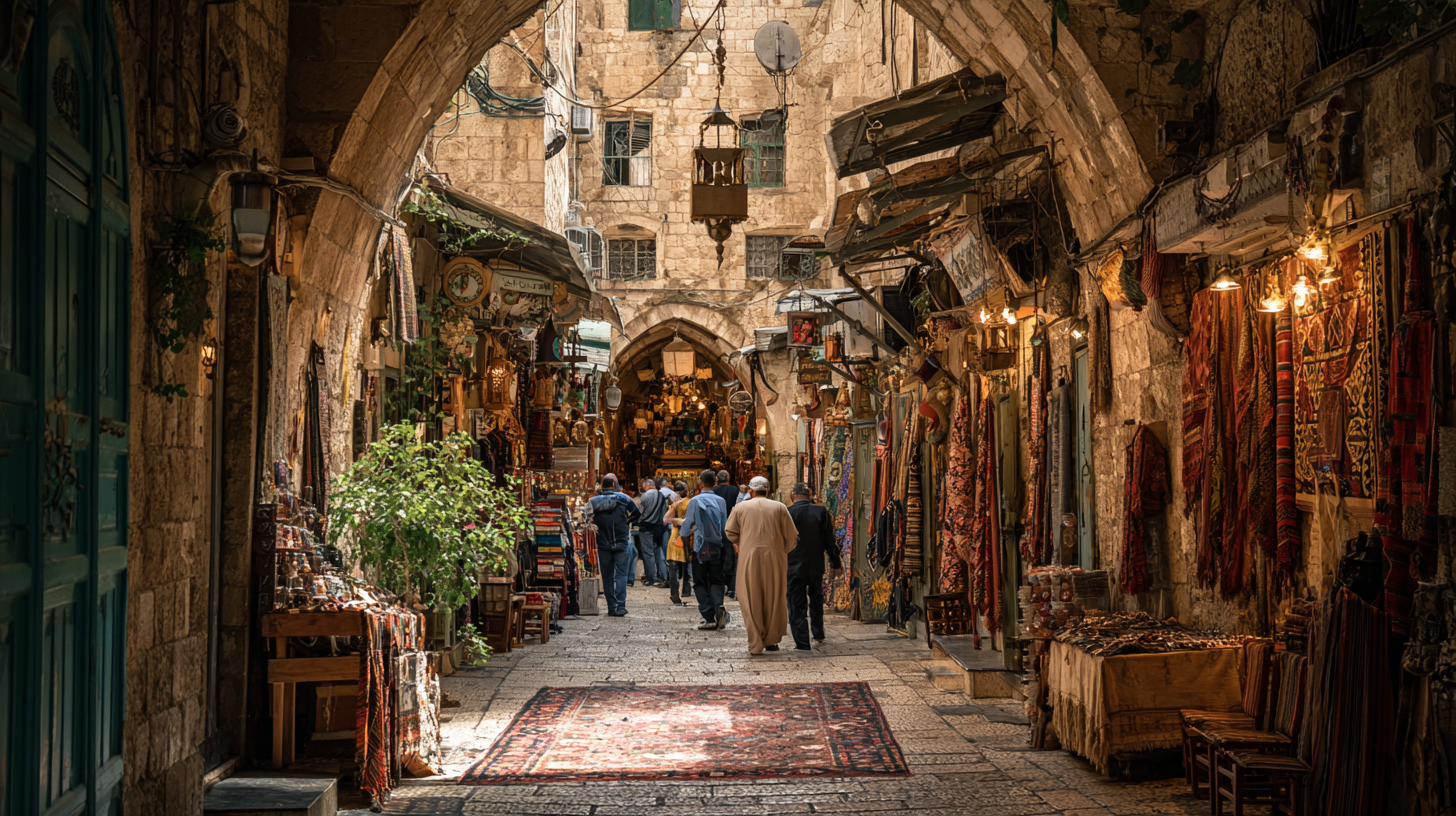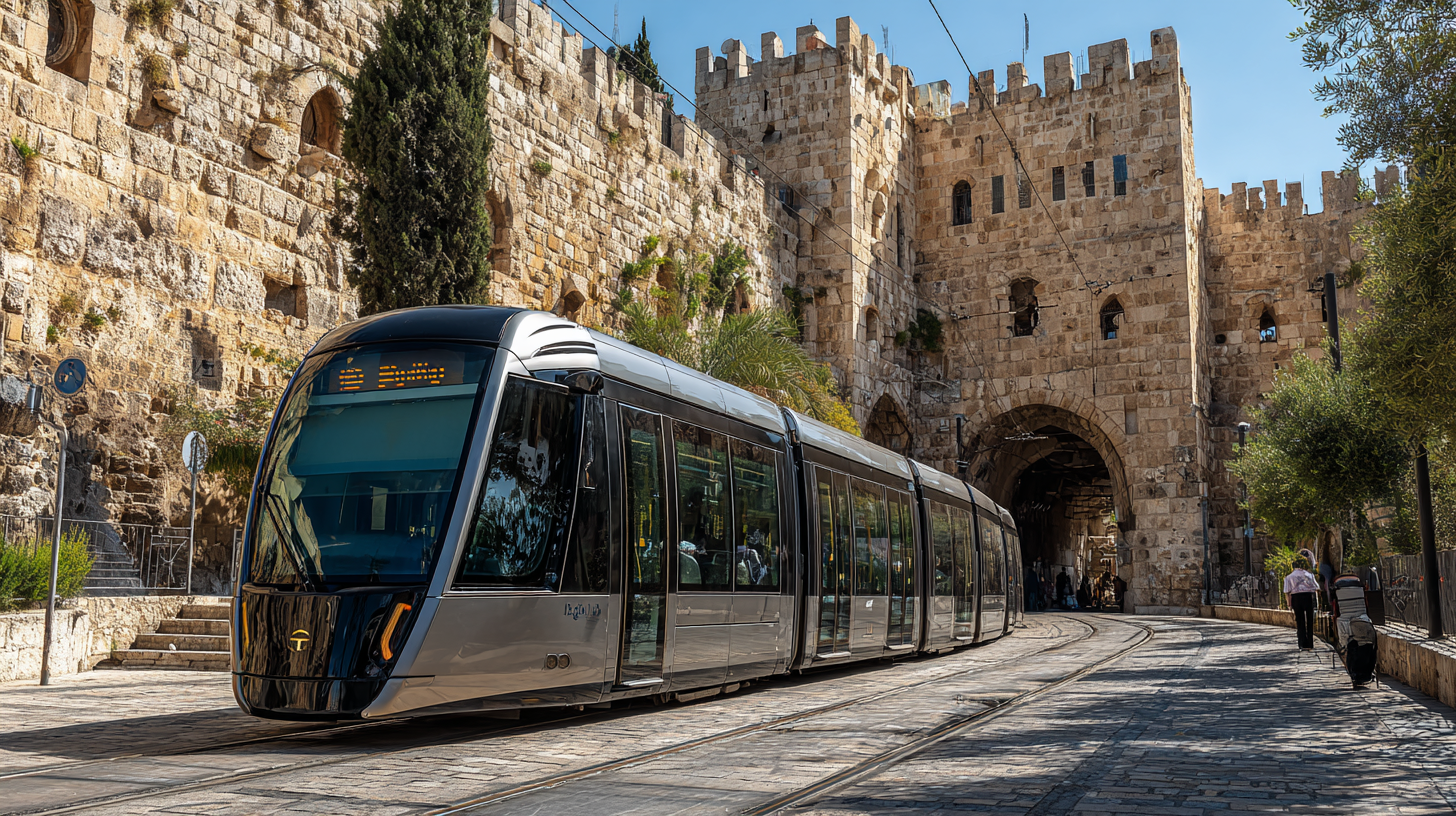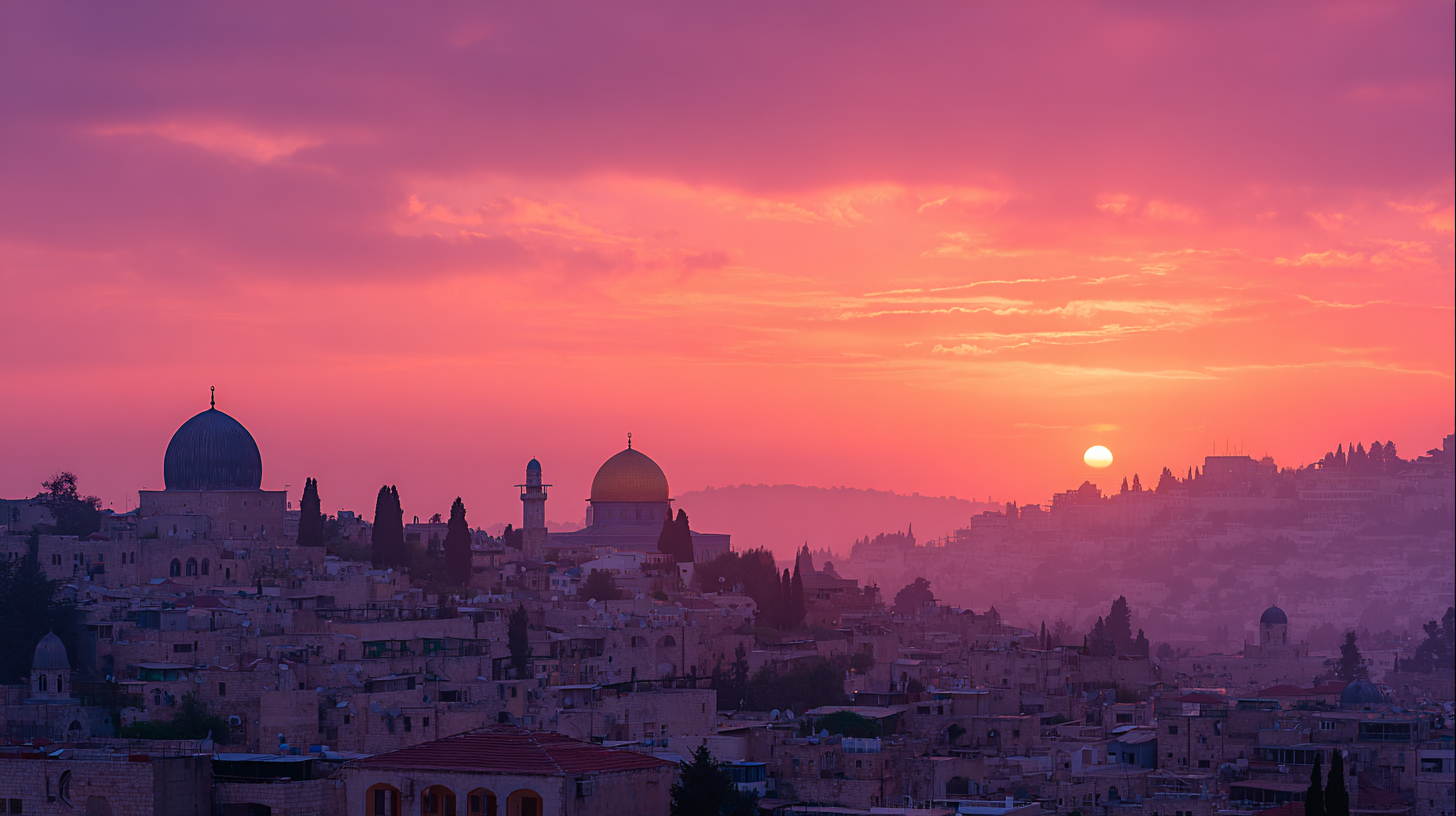Jerusalem History: Where Time Breathes Through Stone
Jerusalem history lives in every stone of the city, long before you take your first step along its ancient paths. Here, time does not simply pass — it lingers in the golden light, whispers from worn stones, and settles in the shadows of towering walls. Travelers arrive expecting history, but what they encounter is something more intimate: a living presence woven from faith, memory, and longing. Each neighborhood, every archway, seems to guide you gently toward the feeling that you are walking not just through a place, but through centuries layered upon one another. Jerusalem doesn’t speak loudly — it hums, inviting you into a story that continues to unfold.
Learn more on the official Jerusalem tourism website.
A Crossroad of Civilizations
For thousands of years, Jerusalem stood as a prize sought by kings, empires, and dreamers. Civilizations rose and fell here, leaving behind echoes in the architecture, fragments in the earth, and myths in collective memory. From the early Canaanites to Romans, Byzantines, Ottomans, and countless others, each era carved its mark into the city like chapters in a single, immense book. Walking through Jerusalem today feels like moving through these overlapping layers — a harmony of ancient gates, stone fortresses, and narrow passages that still carry the breath of their creators.

Yet despite its turbulent past, the city has always been a place where cultures meet rather than simply collide. In a single hour, you can wander from bustling bazaars to sacred courtyards, from ancient citadels to quiet terraces overlooking timeless landscapes. Everything here feels intertwined: the sounds, the scents, the languages, the rhythms of life. Jerusalem is not just a crossroads of civilizations — it’s a reminder that humanity’s greatest stories are born where worlds touch. Throughout Jerusalem history, civilizations have shaped the city’s identity in profound ways.
The Cradle of Major Religions
Few places on Earth hold such profound spiritual weight. For Jews, the Western Wall offers a moment of closeness to generations who prayed, hoped, and built their lives around a faith that carried them through centuries. Touching its stones feels like touching history itself, warm from millions of hands and heavy with whispered prayers. Christians find their spirit awakened in the Church of the Holy Sepulchre, where the story of sacrifice and resurrection is not just taught, but deeply felt in the air of the dimly lit chapels. Every corner seems to vibrate with devotion, drawing pilgrims forward with quiet reverence.

For Muslims, the golden dome of the Dome of the Rock rises like the sun above the Old City, its beauty radiating both tranquility and sacred power. The surrounding courtyards of Al-Aqsa are filled with gentle murmurs of worship, creating a contrast between stillness and vitality. These holy sites are not artifacts locked behind glass; they are alive, pulsating with ceremonies, footsteps, and centuries of devotion. Jerusalem is a sanctuary where three great religions meet — not in perfect harmony, but in an intricate, awe-inspiring tapestry of faith.
A Landscape of Conflict and Coexistence
Jerusalem has witnessed more conflicts than most cities could bear, yet it continues to survive with a resilience that feels almost otherworldly. Even its quiet mornings seem etched with the memory of struggles, negotiations, and hopes for peace. The Old City’s four quarters — Armenian, Christian, Jewish, and Muslim — stand shoulder-to-shoulder like four siblings shaped by different stories but raised under the same sky. Their intertwining cultures turn everyday life into a mosaic of rituals, scents, and voices.

And still, amid the tensions, the city’s humanity shines most brightly. Merchants greet travelers with warmth, children play freely in ancient courtyards, and worshippers from different faiths pass one another with respectful nods. Coexistence here is imperfect, fragile, even complicated — but undeniable. It is this balance between conflict and connection that gives Jerusalem its unique soul. The city stands not only as a witness to history, but as a testament to the enduring human hope for understanding.
Contemporary Jerusalem: A Modern Metropolis with an Ancient Pulse
Modern Jerusalem thrives with the rhythm of a city reinventing itself without ever abandoning its roots. Sleek trams glide past medieval walls, art galleries host bold contemporary works, and local cafés buzz with young people discussing technology, politics, and dreams. The city has become a hub for creativity and innovation, a place where new ideas take shape under the watchful gaze of ancient hills. Universities, research centers, and cultural institutions add a vibrant energy that complements — rather than replaces — its traditional heritage.

Yet even in its modernity, Jerusalem remains deeply personal and intimate. Markets brim with spices, fresh bread, and stories exchanged over every purchase. The scent of incense drifts from monasteries, while the call to prayer echoes harmoniously with church bells. Life moves forward, but never far from the past. The coexistence of the old and the new brings a rare kind of beauty — a reminder that progress and memory can share the same streets without losing themselves. Modern life in Jerusalem continues to reflect layers of Jerusalem history beneath the surface.
Conclusion
Jerusalem is not a city you simply visit — it’s one you feel. It draws you into a world where history breathes, cultures intertwine, and spirituality lingers in the smallest details. Whether you stand before ancient walls or wander through lively markets, you become part of the ever-unfolding story of a place that shaped civilizations and continues to inspire awe. The magic of Jerusalem lies in its ability to hold both conflict and hope, sorrow and beauty, the sacred and the everyday.

For every traveler, Jerusalem offers more than a journey — it offers perspective, connection, and a deeper understanding of what it means to be human.
Read more: “Travel and Adventure in Israel”
